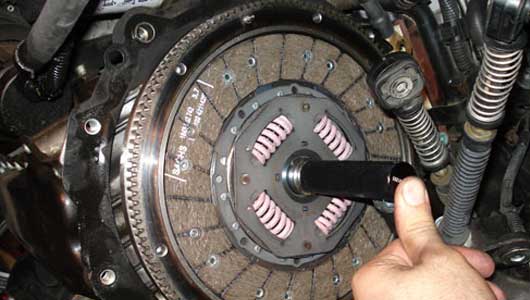Clutch Diagnostics and Troubleshooting
Tips for the proper handling of clutches.
Installing clutches

How to install a clutch kit
If you observe only a few decisive details during clutch replacement, you can mostly save a lot of time and high costs and avoid unhappy customers.
Check clutch disks
Greasing the hub spline of clutch disks
Clutch noise
Clutch grabs
Clutch slips
Clutch does not disengage
Checking DMF

 English
English














